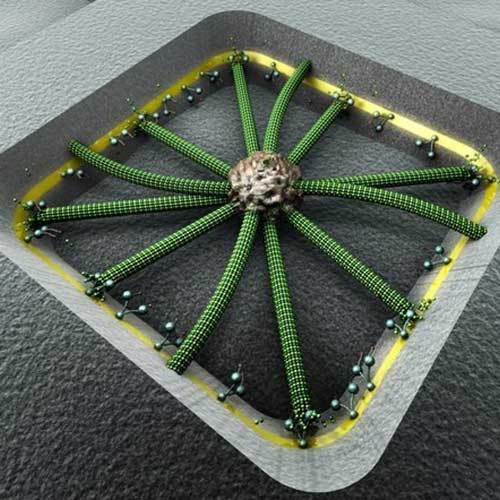
Dutch Origins Center: “building and directing life from molecule to biosphere”
There hasn’t been much fanfare about it---the Dutch like to approach things quietly, preferring substance to bluster. But it’s clear what Dutch ingenuity can do. I’m writing from New York, for example, which once was New Amsterdam.
The present story opens at Groningen in the north of Holland, home to one of the largest natural gas fields in the world, and site of this week’s inauguration of the Dutch Origins Center, which kicks off with a symposium at the University of Groningen---“Fundamentals of Life in the Universe” (August 31-September 1). Organized under the auspices of the Royal Netherlands Academy of Sciences, the event features some of the most relevant names in science presenting around these five themes: (1) origin of the Earth and life; (2) predicting evolution of life; (3) building and directing life from molecule to biosphere; (4) life in extraterrestrial environments; (5) emergence and bridging of temporal and spatial scales.
Of the five themes, the emergence and bridging of temporal and spatial scales seems most intriguing. Principals involved with the center---its manager is Jan-Willem Mantel---think it’s crucial to develop multiscale mathematical models to make sense of interactions of the chemical, biological, physical and astrophysical dimensions of our reality, noting the following:
“For the biological and physical sciences, these developments will help us understand how molecules can self-organize into self-replicating, living cells, how cells can join forces to form multicellular tissues and organisms, and how organisms form ecosystems.”
The Dutch Origins Center, a virtual project, has been led by Nobel laureate Ben Feringa (2016, Chemistry)---keynote speaker of this week’s two-day conference. The project is a Dutch national initiative involving 17 of the country’s universities and institutes.
Other high-profile conference presenters include Dieter Braun, a Simons Collaboration on the Origins of Life investigator, who will address “transport phenomena and nucleic acid replication.” Of course, John Sutherland, one of Harry Lonsdale’s top Origins prizewinners as well as a SCOL investigator, will be there spinning heads about systems chemistry. Tetsuya Yomo will enlighten about the artificial cell.
Curiously, Steve Benner’s $5.4M Templeton-funded Origins project isn’t represented, but inorganic chemist Lee Cronin---who’s developing a “Universal Life Detector” with big bucks from Templeton--- will address this week’s gathering. Cronin, based at the University of Glasgow, has been attempting to make matter come alive.
One of most notable presenters at the event is astrobiologist Bob Hazen, who told me he is “very sympathetic to people who see echoes of biology in mineralogy”. Hazen explained his perspective to me at length in a 2008 book interview:
“I want to make very clear what I mean by evolution. It’s not just change over time. In this case it’s diversification or complexification over time.
Let me give you a brief abstract of this idea. All terrestrial planets like Earth, Mars and Mercury and their moons, etc., begin in a pre-solar cloud of dust and gas. In that pre-solar cloud, there are microminerals---about a dozen different minerals: diamonds, graphite, corundum, spinel---all together about a dozen different minerals.
And as you clump those together to form the earliest bodies and meteorites and asteroidal bodies, you get about 60 different minerals through heating of the sun in the primary formation of minerals. About 60 different minerals that form the most primitive minerals in what are called chondrite meteorites.
And then you go through periods of aqueous alteration. And then these planetismals get larger. You get up to about 250 different minerals. You see increasing complexification, from 12 to 60 to 250 to 350 in a place like Mercury, to 500 in a place like the moon. And with plate tectonics you add more minerals and you go to 1,000. You go to 1,500 and finally when life kicks in on Earth you get maybe another 3,000 known minerals. So about two-thirds of all the known minerals on Earth actually result in a very complex feedback mechanism with life.
That’s what we call “mineral evolution”. . . That’s something I see as a process of evolution, which in many ways, is parallel to biological evolution. . . .
You have species. You have diversification. You have extinction. You have punctuation. You have selection. Those five characteristics and others as well are common to all evolving systems whether they be minerals or language or biology or microbes or bears. And the fact is that there are also fundamental differences amongst those different systems.
I’m very sympathetic to people who see echoes of biology in mineralogy or echoes of biology in language.”---The Altenberg 16: An Exposé of the Evolution Industry
So Hazen and Cronin will have a lot to chat about on Thursday and Friday.
I have also spoken with Lee Cronin in recent years and questioned his thinking about “survival of the fittest” as key to making matter come alive---which he vigorously defended. I’m also skeptical about aspects of Cronin’s $860,802 Templeton project:
“Our proposal aims to define, and test a new theory of complexity and emergence in molecular space; asking the question: Can the molecular constructors found in biology lead to highly complex molecules that are simply not found abiotically? We will explore this by comparing the complexity of simple molecules to those complex ones found in biology and aiming to establish a threshold to discriminate if the molecule in question could have been generated by a non-biological process, or if it has originated in a living system, either directly as a metabolite, or indirectly by a person (e.g. Earth or Alien chemist), or a living proxy (robot).”
I won’t be attending the Dutch meeting. But somebody please ask Lee Cronin to tell us a bit more about his “Alien chemist.”
Missing from the talks is anyone from the recent UK, Canadian and Italian investigation with “first observational evidence that our universe could be a vast and complex hologram.”
THE PROGRAM
Thursday, August 31
Session 1 – Origin of the Earth and Life:
John Hernlund (ELSI, Japan): Building scientific cohesion between disparate scientific fields
Geoff Blake (Caltech, US): Organic material in planet-forming regions
Bob Hazen (Carnegie, US): Minerals and the origin of life
John Sutherland (MRC-LMB): Origins of life systems chemistry
Paulien Hogeweg (U. Utrecht, NL): Prebiotic evolution
Session 2 – Predicting the evolution of life:
Tim Lenton (U. Exeter, UK): Predicting the evolution of biospheres
Tetsuya Yomo (ECNU, CN): Synthesis and experimental evolution of an artificial cell model
Marcel Visser (NIOO, KNAW): Evolution on a changing planet
Phil Donoghue (U. Bristol, UK): The timescale of evolutionary history
Session 3 -- Building Life from molecule to biosphere:
Bert Poolman (U. Groningen, NL): Can we build from molecular components a minimal form of life?
Cees Dekker (U. Delft, NL): Synthetic cell division
Origins Center kickoff event: Speed networking
Ben Feringa (U. Groningen, NL): Keynote speech
Friday September 1
Han Olff (U. Groningen, NL): From molecule to biosphere: reductionistic versus emergentistic approaches
Dieter Braun (LMU, Germany): Transport phenomena and nucleic acid replication
Session 4 -- Life in extraterrestrial environments:
Giovanna Tinetti (UCL, UK): Biosignatures in exoplanet atmospheres
Inge Loes ten Kate (U. Utrecht, NL): Prospects for life on Mars
Charley Lineweaver (ANU, Australia): What makes planets habitable?
Lee Cronin (U. Glasgow, UK): Towards life in the lab and complexity as a life detection system
Session 5 -- Emergence and bridging of temporal and spatial scales:
Peter Sloot (U. Amsterdam, NL): The quantum nature of biology and life
Alexander van Oudenaarden (Hubrecht Institute, NL): Revealing novel cell types, cell-cell interactions and cell lineages by single-cell sequencing
Stan Gielen (NOW, NL): The future of the Dutch National Science Agenda
Charley Lineweaver (ANU, Australia): Are we alone in the universe (public talk, downtown)
Symposium Organizers
Royal Netherlands Academy of Sciences (KNAW)
Faculty of Science and Engineering (FSE), University of Groningen
Nationale Wetenschaps Agenda (NWA)
Max Gruber Foundation
SRON Netherlands Institute for Space Research
Groningen Biomolecular Sciences and Biotechnology Institute (GBB)
Groningen Institute for Evolutionary Life Sciences (GELIFES)
Stratingh Institute for Chemistry
Zernike Institute for Advanced Materials
LKBF
Kapteyn Astronomical Institute
